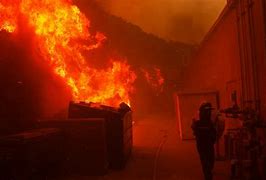The ongoing wildfires in Los Angeles have caused destruction for both humans and wildlife, emphasizing the interconnectivity of our ecosystem amid such disasters. Los Angeles has been dealing with major wildfires, including the Eaton Fire and the Palisades Fire. These fires have resulted in evacuations, property damage, and serious health issues among inhabitants. Understanding the causes and health consequences of these disasters is critical for effective response and mitigation efforts.
Wildfires: Their Causes
Wildfires in Los Angeles are not uncommon, and they are caused by a combination of:
Santa Ana Winds: These powerful, dry winds quickly spread flames across barren regions.
Drought Conditions: Vegetation becomes tinder-dry, providing ideal fuel for flames.
Human Activity: Accidental ignitions, electrical problems, or arson are common causes of these infernos.
MUST READ; The Health Risks of Bread Additives: NAFDAC’s Crackdown on Saccharin and Potassium Bromate in Nigeria
Health Effects of Wildfires on Humans
Respiratory Issues: Wildfire smoke, which contains fine particulate matter (PM2.5), can cause respiratory disorders such as asthma, bronchitis, and decreased lung function. During wildfire smoke episodes, emergency room visits for respiratory disorders such as asthma and COPD skyrocketed, often doubling.
Cardiovascular Problems: Inhaling fine particles from wildfire smoke has been related to early death and can worsen cardiovascular illnesses, increasing the risk of heart attacks and strokes.
Mental Health Effects: The trauma of evacuation, loss of house, and interruption to everyday life can cause anxiety, sadness, and post-traumatic stress disorder.
Eye and Skin Irritation: Direct exposure to smoke and ash can cause burning eyes, runny nose, scratchy throat, headaches, and other illnesses.
On Wildlife
As humans face the health impacts of wildfires, wildlife suffers equally, if not more. Loss of Habitat: Wildfires destroy forests, grasslands, and water sources, leaving animals without food or shelter. Displacement and Trauma: Animals often wander into urban areas in search of safety, only to face additional dangers like traffic or human conflict. Health Hazards: Wildlife inhaling smoke can suffer respiratory damage, and injuries from burns are common.
Current Situation and Recommendations
As of January 9, 2025, air quality in Los Angeles had reached hazardous levels, with certain areas reporting PM2.5 concentrations that exceeded World Health Organization recommendations. Residents are recommended to remain indoors, close windows and doors, and use air purifiers if available. Those with underlying health concerns should be very cautious and seek medical attention if symptoms worsen.
Finally, the present flames in Los Angeles serve as a vivid reminder of how environmental and public health issues are inextricably linked. Addressing the underlying causes and adopting effective health warnings are critical steps toward protecting communities both now and in the future.


